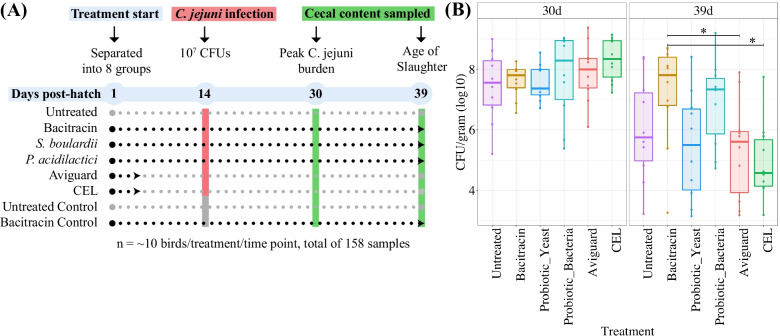Fig. 1.
Schematic of Experimental Design and C. jejuni burden. A Experimental design. Chickens were divided randomly into 8 groups and assigned to either one of 6 treatments or left untreated at day one of age (Aviguard, CEL, probiotic bacteria (Pediococcus acidilactici CNCMI-4622), probiotic yeast (Saccharomyces cerevisiae boulardii CNCMI-1079), AGP (bacitracin)). On day 14, all groups, except for two (one bacitracin and one untreated group) were orally challenged with 107 CFUs of C. jejuni (strain 81–176). Samples of cecal contents were collected at day 30 and 39 of age (n = 10 birds per time point and treatment group, total of 158 samples for CFU enumeration and 16S rRNA sequencing). After sample collection, tenfold serial dilutions in PBS were plated onto Muller Himton agar containing Preston Campylobacter Selective Supplement. Plates were incubated in microaerophilic conditions at 41 °C and CFUs of C. jejuni were enumerated after 40–48 h and expressed as log10 Campylobacter /g of cecal content. B Boxplots representing the median of CFUs of C. jejuni in each treatment group. Statistical analysis was performed using Kruskal–Wallis test followed by pairwise Dunn's tests. *P < 0.05

